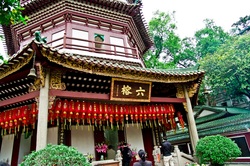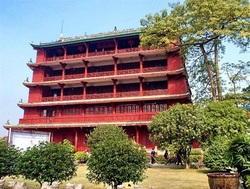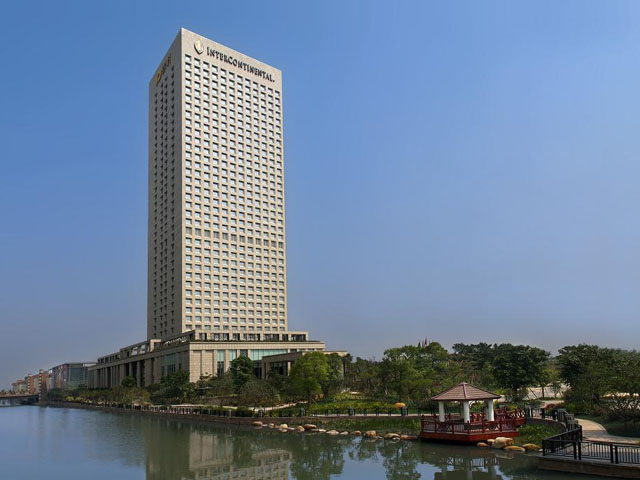
Guangzhou Baiyun International Airport in China is located 28km (17 miles) from the center of Guangzhou which is the capital of Guangdong province (formerly Canton) in China. The new state-of-the-art airport was opened in August 2004, replacing the former International Guangzhou airport with the same name which has now been abandoned. Guangzhou Baiyun International Airport is one of China's largest aviation hubs in South China and home to China Southern Airlines. Taxis to the center of Guangzhou are available outside the arrival hall of Guangzhou airport, but have your destination written in Chinese as most of the drivers don't speak English. The airport has many restaurants, bars and fast-food outlets. A shopping center and booths with small shops are located in the main terminal building. The international departure hall of Guangzhou Baiyun International Airport has a large selection of duty-free shops. Most major Chinese banks have currency exchange counters and international ATM tellers in the main terminal building. Accommodation available in Guangzhou hotels near the airport.
Welcome to Guangzhou for Guangzhou fair, During Canton Fair, Cantontradefair.com could offer:
Free Airport Pick-up to Downtown Hotels
Book Hotel Package, get FREE ticket for Pearl River Night Cruise
In August 2008, the airport's new expansion plan was approved by the National Development and Reform Commission of China.
The airport will build a third runway 400 metres east of the existing east runway. The new runway will be 3800 metres long and 60 metres wide. Other elements of the expansion plan include a 531,000-square-metre Terminal 2, a new indoor car park and an outdoor car park, a transportation centre, and a metro station which will serve Terminal 2. The cost of the project will be ¥14.036 billion. Construction of the third runway is estimated to start in 2011 and finish in the first half of 2013.[4] When the whole project is finished by the end of 2015,[4] The airport will be able to handle 75 million passengers and more than 2.17 million tonnes of cargo a year.
Welcome to Guangzhou for Guangzhou fair, During Canton Fair, Cantontradefair.com could offer:
Free Airport Pick-up to Downtown Hotels
Book Hotel Package, get FREE ticket for Pearl River Night Cruise
In August 2008, the airport's new expansion plan was approved by the National Development and Reform Commission of China.
The airport will build a third runway 400 metres east of the existing east runway. The new runway will be 3800 metres long and 60 metres wide. Other elements of the expansion plan include a 531,000-square-metre Terminal 2, a new indoor car park and an outdoor car park, a transportation centre, and a metro station which will serve Terminal 2. The cost of the project will be ¥14.036 billion. Construction of the third runway is estimated to start in 2011 and finish in the first half of 2013.[4] When the whole project is finished by the end of 2015,[4] The airport will be able to handle 75 million passengers and more than 2.17 million tonnes of cargo a year.






 RSS Feed
RSS Feed